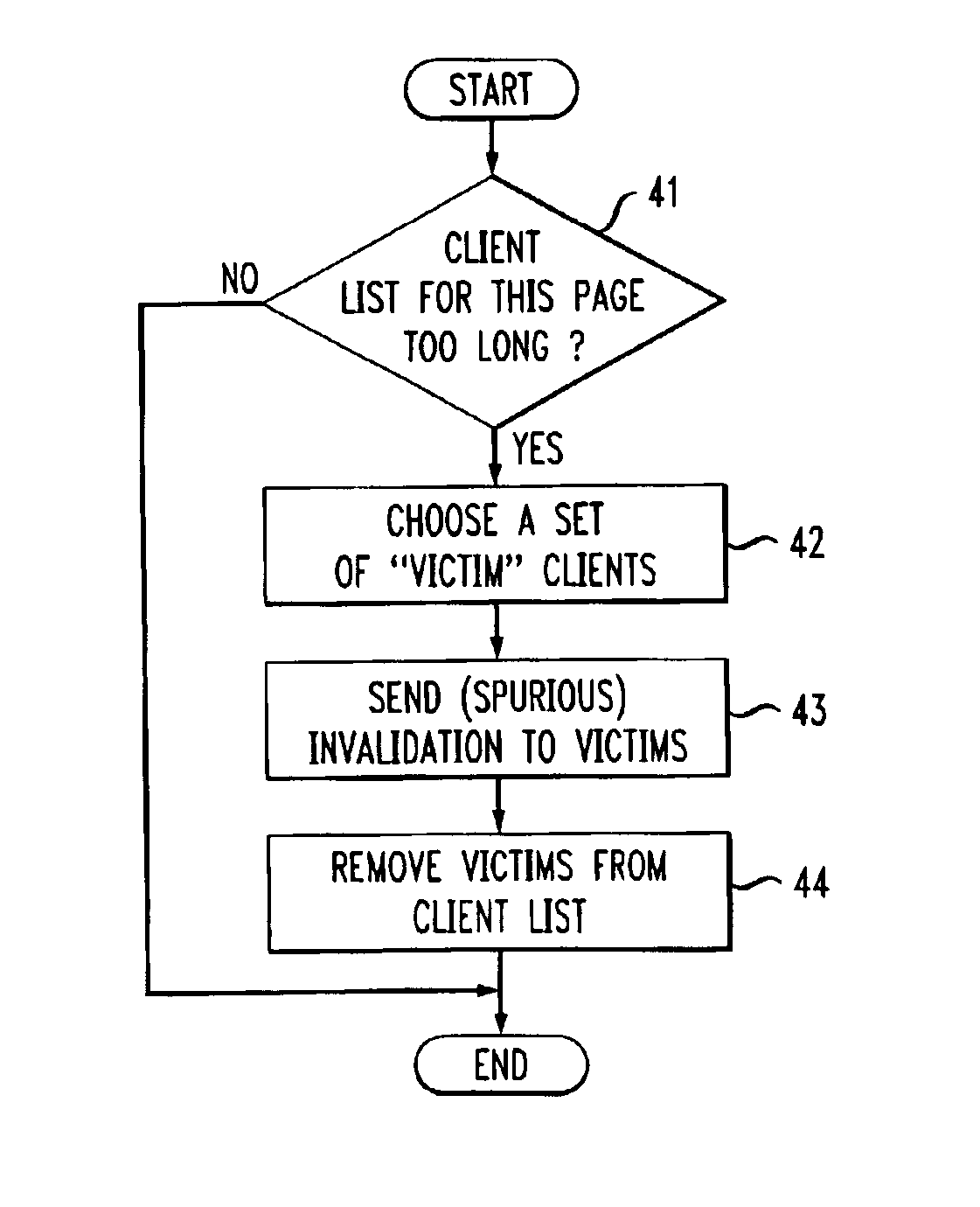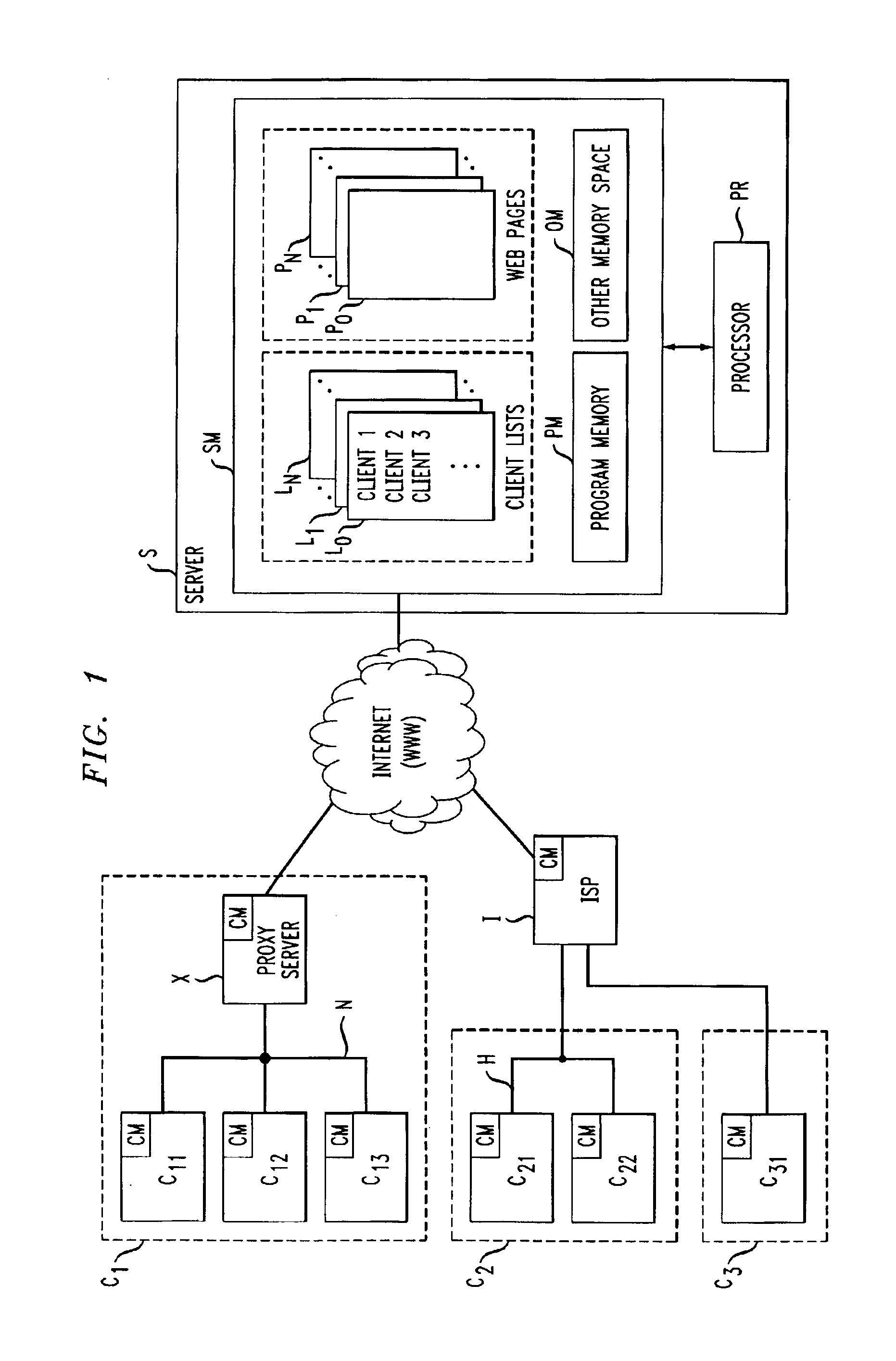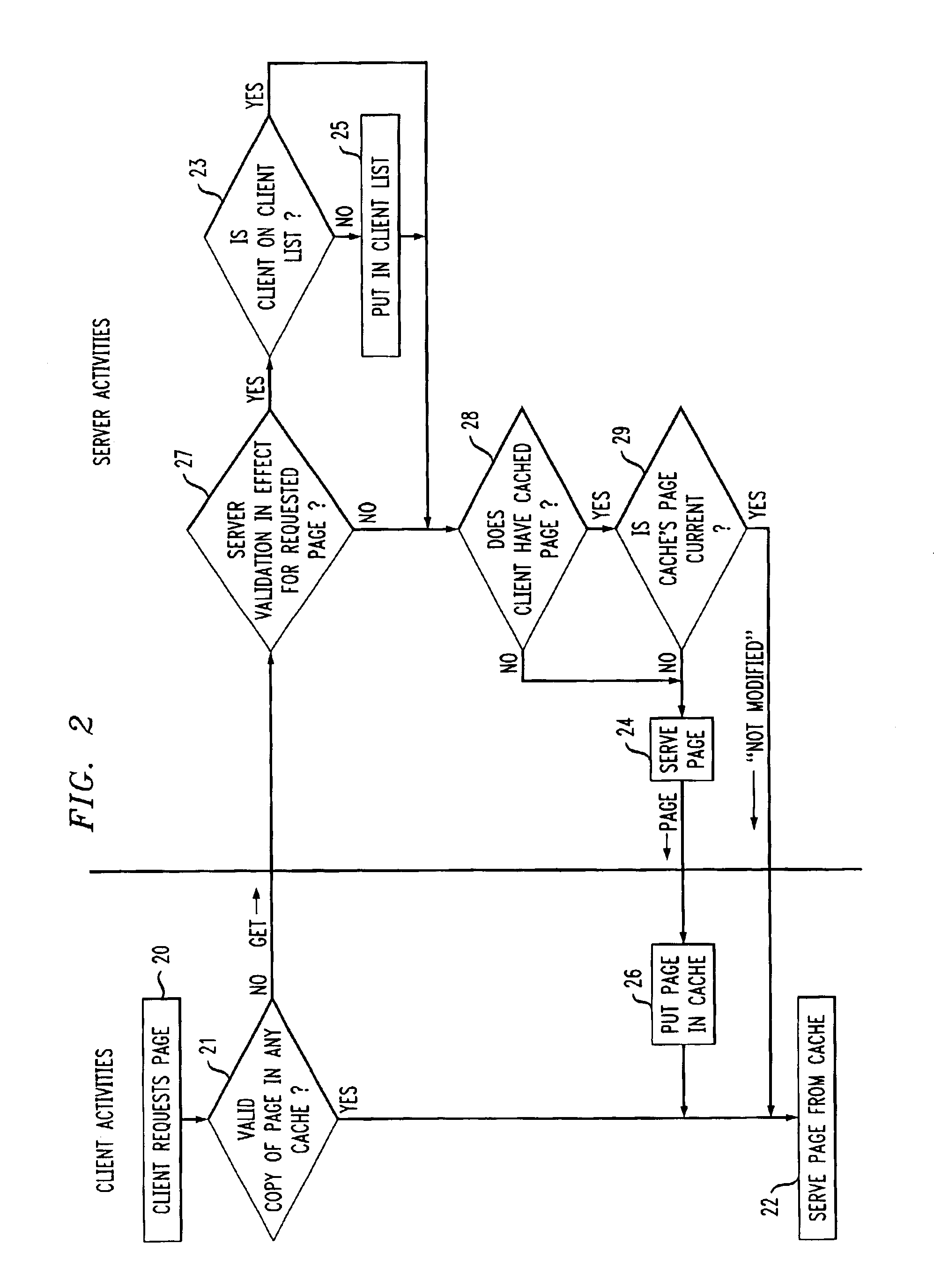Cache invalidation technique with spurious resource change indications
a resource change indication and cache technology, applied in the field of cache invalidation techniques, can solve the problem of generating a certain amount of unnecessary web traffic, and achieve the effect of safe deletion
- Summary
- Abstract
- Description
- Claims
- Application Information
AI Technical Summary
Benefits of technology
Problems solved by technology
Method used
Image
Examples
Embodiment Construction
[0016]The client / server arrangement in FIG. 1 shows a Web server S illustratively connected to the Internet. Server S includes a processor PR and memory SM. Memory SM includes a program memory PM comprising a machine-accessible medium having instructions encoded thereon for enabling the server to carry out its various operations, those operations including those functions that implement the present invention. Memory SM also includes other memory space OM in which data and other information necessary for the operation of the server are stored.
[0017]Also stored with memory SM of server S are Web pages P0, P1 . . . PN, which can be accessed via the Internet by various clients, which are, for example, personal computers or workstations. These are pages for which server invalidation is in effect. Whenever these pages are served, they are assigned an expiration time, which is made known to the requesting clients as part of the protocol by which the page was communicated. The expiration ti...
PUM
 Login to View More
Login to View More Abstract
Description
Claims
Application Information
 Login to View More
Login to View More - R&D
- Intellectual Property
- Life Sciences
- Materials
- Tech Scout
- Unparalleled Data Quality
- Higher Quality Content
- 60% Fewer Hallucinations
Browse by: Latest US Patents, China's latest patents, Technical Efficacy Thesaurus, Application Domain, Technology Topic, Popular Technical Reports.
© 2025 PatSnap. All rights reserved.Legal|Privacy policy|Modern Slavery Act Transparency Statement|Sitemap|About US| Contact US: help@patsnap.com



